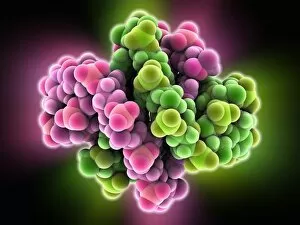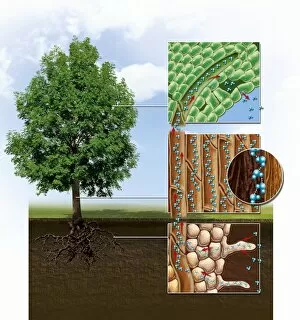Hydrogen Bonding Collection
Hydrogen bonding, a fundamental concept in chemistry, plays a crucial role in various biological and industrial processes
For sale as Licensed Images
Choose your image, Select your licence and Download the media
Hydrogen bonding, a fundamental concept in chemistry, plays a crucial role in various biological and industrial processes. Just like the intricate machinery of a paper making factory, hydrogen bonds intricately connect molecules together. In the world of molecular biology, one fascinating example is seen in the streptavidin-biotin molecular complex. This complex resembles an unbreakable bond between two partners, with multiple hydrogen bonds holding them tightly together. The strength and specificity of this interaction make it widely used in biotechnological applications. Imagine rows upon rows of streptavidin-biotin complexes lining up like well-organized workers on an assembly line. Each bond represents a strong connection that ensures stability and functionality within biological systems. But hydrogen bonding doesn't stop there; it extends its influence to DNA structures as well. A DNA quadruplex, resembling an elegant architectural model, showcases how hydrogen bonds contribute to maintaining the integrity and structure of our genetic material. Just as each cog fits perfectly into place within a machine, so do these small but mighty interactions shape our understanding of chemical phenomena. Hydrogen bonding provides stability and cohesion among molecules - whether they are involved in industrial processes or essential biological functions. So next time you encounter a paper making factory or examine intricate molecular models such as streptavidin-biotin complexes or DNA quadruplexes, remember the power behind those delicate lines connecting atoms – the remarkable force known as hydrogen bonding.







